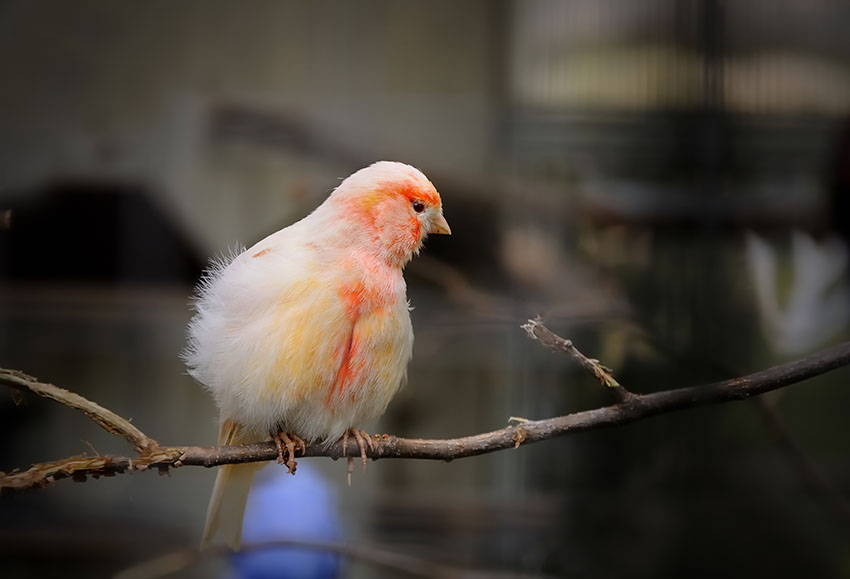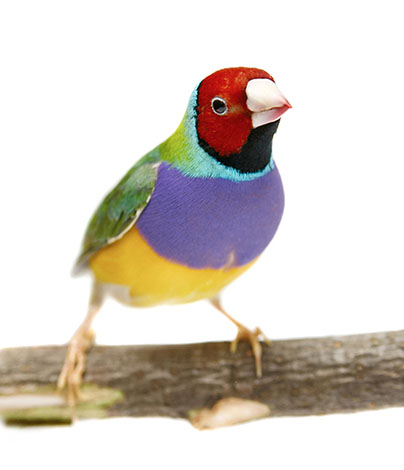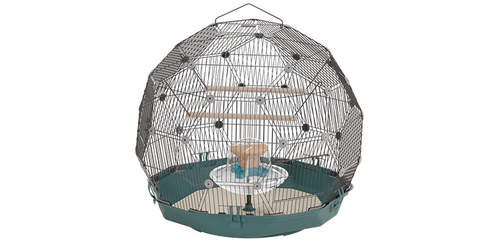Moulting tends to make finches restless and unsettled. It’s probably a fairly uncomfortable, itchy process losing one set of feathers and sprouting new ones. During the moult birds usually change their behaviour in some way. In the case of Canaries, they stop singing. Some finches lose appetite, some gain it.
An excellent balanced diet is essential if the new feathers are to look their best. A moulting birds needs more protein in its diet than normal, and one of the best ways of providing this is via egg food (see Egg Food in the Finch Food section of this guide). Some species enjoy a bit of cooked meat. Fatty seeds such as flax, hemp and millet help keep the new feathers in good condition too. Hemp in particular is a bird ‘superfood’, providing a perfect balance of omega 3 and 6 fatty acids, lots of trace minerals, and plenty of protein.

A moulting Canary will stop singing
During the moult, birds need to keep warm, as their coats will be thinner than usual (but never bald, note - that’s a sign of health problems). They also need more rest than normal - up to 12 hours, which means using a cage cover to simulate a long, comfy night. Birds also need to feel secure, with lots of downtime and quiet spaces.
Moulting birds carry out more preening than usual. Each new ‘pin’ feather has a sheath on its tip, and the finch needs to remove this for the feather to open properly. This requires a lot of personal grooming and a quiet spot where the preening can take place uninterrupted.
When Do Canaries Moult?
Canaries usually moult once a year, often in the summer. The process takes between six and 12 weeks. If your bird moults for longer periods, or is dropping feathers all year (a condition known as ‘soft moult’), or develops bald patches, there are environmental and/or health issues you need to address (see the Health Problems section).
Zebra Finch Moulting
Zebra finches don’t have an annual moult. This is the case with lots of pet finch species (with notable exceptions such as the Gouldian finch, which moults annually like a Canary). This doesn’t mean they don’t replace their feathers, they just do it all year round, one dropped feather at a time.
Having said that, the feathers may suddenly fall in larger numbers than usual. Keep your eyes open for this, as the bird will require extra protein in its diet, or it may be symptomatic of ill health.
Gouldian Finch Moulting
Gouldians are one of a few finches that have an annual heavy moult, soon after the end of the breeding season. The moult can be stressful for them, and the loss of feathers can happen all at once, resulting in bald or semi-bald patches. In most finches this would be a sign of disease or dietary problems, but it is quite normal for Gouldians.

Gouldian finches have a particularly heavy moult
Proper diet is essential during this time, and you will soon notice the eruption of new pin feathers. Plenty of protein is necessary, and egg food, given daily, is the ideal source. The Gouldians should also be kept in an environment no cooler than 24°C.




Comments
Barbara, 15 September 2020
What r mites and how do u treat a canary and his cage?
Yolanda, 13 September 2020
I'm worried about my canary he stopped singing and he seem to be listless and just sit there for a long period of time should I be concerned
Dalia, 21 April 2020
Red headed Gouldian Finch seems to have finished molting. Not dropping any more feathers. How long does it take for head to turn read again?
David, 11 February 2019
I have one Gouldian finch with a very very bald neck. My wife says he is old. I disagree. Shall I take him to the vet? They live in an outdoor cage in Chiang Mai-which gets cold this time of year. Shall I put back the breeding box to keep them warm?